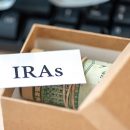Qualified Retirement Plans: All You Need to Know

Many people feel that retirement planning is as difficult and complicated as mastering a new foreign language. However, this is not necessarily the case. There are a lot of retirement plans available to employees. Most of them are also easy to understand, although each of them may come with their own set of limitations. These limitations generally depend on an employee’s gross income or the amount of money they contribute towards the plan annually.
A qualified retirement plan is one such retirement planning instrument that offers employees a medium to build their retirement savings. The account is also accompanied by tax benefits and several other advantages as well.
What is a qualified retirement plan?
A qualified retirement plan is a type of employer-sponsored plan that provides specific retirement benefits to participating employees.
A qualified retirement plan allows employers to avail tax deductions whenever they contribute to an employee’s account. Once a plan has met certain requirements specified in the Internal Revenue Code Section 401(a) and the Employee Retirement Income Security Act (ERISA), the employer who has established the plan, as well as the employees who opt for it, are entitled to special tax benefits.
Moreover, contributions made by employees into the plan are also tax-deferred until the money is withdrawn from the account. Generally, employers offer qualified retirement plans to attract and retain employees.
Some examples of qualified retirement plans include profit-sharing plans, individual retirement accounts (IRAs), money purchase plans, and simplified employee pension (SEP) plans.
Types of qualified retirement plans
Primarily, qualified retirement plans can be distinguished into two types – defined benefit and defined contribution. Let’s take a closer look at these:
- Defined benefit plans
Defined benefit plans are a type of pension plan that provide employees with a pre-determined, guaranteed payout at the time of their retirement. These plans are known as defined benefit plans because the formula used for calculating the retirement benefits are pre-defined.Unlike other types of retirement plans, the payout that an employee receives through a defined benefit plan is not dependent on their individual investment returns. The guaranteed payout is calculated based on factors such as the employee’s age, earning history and service tenure, amongst others.With defined benefit plans, employees do not bear any investment risks. Rather, employers are legally obligated to make up for any funding shortfalls arising due to faulty calculations or assumptions.
Annuity-type pensions, fully insured 412(e)(3) plans, and cash balance plans are some prime examples of defined benefit plans.
- Defined contribution plans
With defined contribution plans, the payout received by an employee depends on how much they have saved and invested on their own during their earning years.Under defined contribution plans, each employee is provided with an individual account and the benefits received by the employee are based solely on the contributions made towards the respective account. For employers, such plans cost less to administer as compared to defined benefit plans.Defined contribution plans are primarily funded by the employee, although some employers might choose to make matching contributions to the account too. Employers are at low risk as they are not obligated towards the account’s performance and investment returns. The onus squarely falls on the employee.
Popular retirement plans such as the 401(k) account, 403(b) and 457 plans, and money purchase plans are some great examples of defined contribution plans.
Benefits of qualified retirement plans
Most employees feel that a qualified retirement plan is probably the best and most efficient way of saving up for retirement. This is due to the many benefits that it provides, such as:
- Convenience: A qualified retirement plan offers a lot of convenience to employees as they do not have to manage their contributions manually. Payments are made automatically and are deducted from their paychecks.
- Tax benefits: One of the most attractive aspects of a qualified retirement plan is the tax benefits that it offers. The contributions made by an employee are tax-deferred until the final withdrawal at retirement. These pre-tax contributions can help employees decrease their annual tax bill significantly.
- Potential employer contributions: Some employers often match employee contributions under qualified retirement plans. Such contributions can be treated as free money.
- Diverse investment opportunities: Another benefit of qualified retirement plans is that employees have different, low-cost investment options to choose from. Some of these options include stocks, mutual funds, real estate, and other money market funds.
- Protection from creditors: Assets under qualified retirement plans are usually safeguarded from creditors under the Employee Retirement Income Security Act (ERISA).
Requirements for qualified retirement plans
The list of requirements, determined by the Internal Revenue Service (IRS), to be eligible for various benefits under a qualified retirement plan is quite extensive. For employees to receive proper benefits at the time of retirement, all these requirements must be met. So, employers, as well as, employees need to establish certain procedures to ensure compliance with the plan document.
Some primary requirements for participation in qualified retirement plans include minimum participation requirements such as age and service tenure, minimum vesting requirements, minimum distribution requirements, direct rollover requirements, non-discrimination requirements, coverage requirements, funding requirements and exclusive benefit requirements.
Additionally, all qualified retirement plans should also comply with certain reporting and disclosure needs, such as the annual filing of Form 5500 or 5500-EZ and reporting of distributions from the plan to the IRS via Form 1099-R.
To sum it up
Qualified retirement plans are one of the best ways to build a solid retirement nest for yourself. With significant tax benefits and various advantages, a qualified retirement plan is worth considering for employees who prefer a relatively hassle-free pension plan. However, both employers and employees should remember to pay attention to the multiple layers of federal regulations that come with these plans and comply with them fully.
If you want to learn more about qualified retirement plans or would like any kind of professional assistance on the matter, you can get in touch with top Financial Advisors.










